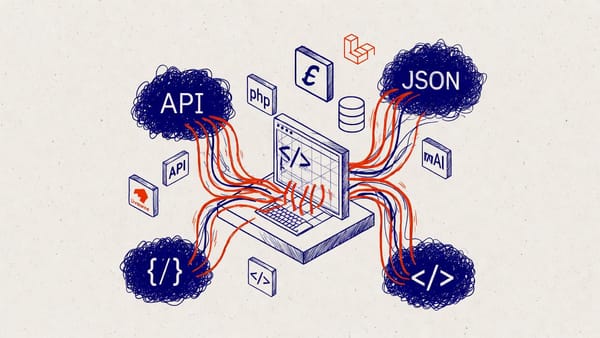From CMS to DXP: How to Build Composable Architectures with Sitefinity
This article explains how Sitefinity 15.x enables API-first delivery, personalisation, and scalable multisystem integration through a clean, modular approach.

Sitefinity has undergone a significant shift over the past years, moving from a traditional .NET CMS into a modern, composable Digital Experience Platform (DXP). The evolution is driven by the changing needs of digital teams who require flexibility, API-first delivery, cloud-native deployment, and seamless integration with CRM, analytics, and AI systems.
With the 15.x releases, Sitefinity is no longer positioned as a monolithic CMS. It has become a central content and experience hub that can power multiple frontends, channels, and systems through standard APIs and extensible services. This article takes a deeper look at what “composable architecture” means in the Sitefinity context and how developers can use it to build scalable, future-proof solutions.
Understanding Composable Architecture in Sitefinity
In traditional CMS platforms, content management, business logic, and presentation often live in the same system. This coupling can slow down development and limit flexibility. Sitefinity’s recent architectural direction separates these concerns through an API-first and integration-first approach.
A composable architecture in Sitefinity typically consists of three layers:
- Content Layer
Structured data, dynamic modules, taxonomies, personalization rules, workflows, and content governance. - Delivery Layer
REST APIs, GraphQL endpoints, and decoupled frontends built with React, Next.js, Blazor, Vue, native apps, or other channels. - Experience Layer
Integration with CRM, DXP tools, AI systems, marketing automation, CDP, and search.
This separation allows organizations to evolve each part of their stack independently while still relying on Sitefinity as a stable, centralized content and experience source.
Key Components of a Composable Sitefinity Architecture
1. Headless and Decoupled APIs
Sitefinity provides multiple ways to expose structured content:
- GraphQL, offering strongly typed schemas, optimized queries, and ideal support for modern JavaScript frontends.
- OData/REST, offering simplicity and compatibility with existing enterprise systems.
Developers can also extend or create custom endpoints:
[Route("api/custom/products")]
public class ProductsController : ApiController
{
[HttpGet]
public IHttpActionResult GetProducts() =>
Ok(DynamicModuleManager.GetManager("Products").GetDataItems());
}This flexibility makes it straightforward to support multiple channels from a single source of truth.
2. Personalization and Context APIs
Sitefinity exposes personalization and segment information through APIs that make it possible to adapt frontends dynamically.
Example of retrieving personalization context:
fetch("/restapi/personalization/context")
.then(res => res.json())
.then(ctx => showPersonalizedContent(ctx.segment));This allows headless frontends to provide tailored experiences without relying on server-rendered pages.
3. Integration Layer and Connectors
A composable architecture thrives on integrations. Sitefinity supports this through:
- Out-of-the-box connectors for Microsoft Dynamics 365, Salesforce, Marketo, HubSpot, and Azure Cognitive Services.
- The IntegrationHub SDK, which provides event-driven integration logic.
- The ability to expose webhooks for real-time communication with external systems.
This layer ensures that Sitefinity does not operate in isolation but fits naturally into enterprise ecosystems.
4. Deployment, Cloud, and Scalability
Sitefinity supports cloud-native deployment via:
- Azure App Service
- Docker
- Kubernetes
- Sitefinity Cloud, with built-in CI/CD, autoscaling, CDN, and Application Insights monitoring
Configuration-as-code using appsettings.json and other structured configuration files makes it straightforward to include Sitefinity in DevOps pipelines.
A Typical Composable Sitefinity Architecture
A simplified conceptual diagram often looks like this:

This illustrates how Sitefinity acts as a centralized content hub while delivery and interaction layers remain fully decoupled.
How Developers Can Start With a Composable Setup
- Enable REST or GraphQL services
Configure endpoints in Advanced Settings → Web Services. - Use or clone the Sitefinity headless starter kits
Available for React and Next.js through the Progress GitHub organization. - Model content as structured data
Use dynamic modules and taxonomies to build predictable schemas. - Integrate external services
Implement custom connectors or use existing Salesforce, Dynamics, or AI integrations. - Automate deployment and scaling
Set up CI/CD with Docker, Azure DevOps, or GitHub Actions; use Sitefinity Cloud for managed infrastructure.
Challenges and Practical Solutions
| Challenge | Recommended Approach |
|---|---|
| Managing content across environments | Use Sitefinity Cloud pipelines or export/import tools |
| Securing headless APIs | Use OAuth or API key management with token expiration policies |
| Performance across multisite setups | Leverage output caching, CDN, and scalable infrastructure |
| Ensuring consistent data with external systems | Use IntegrationHub event handlers with retry and monitoring mechanisms |
These solutions help maintain stability in distributed or microservice-oriented environments.
Why Sitefinity Works Well as a Composable DXP
Several characteristics make Sitefinity particularly suitable for composable architectures:
- Built on modern .NET, offering high performance and long-term stability.
- A true hybrid approach, allowing projects to mix traditional and headless pages.
- Well-defined extension points: dependency injection, events, hooks, webhooks, and connectors.
- Managed Cloud hosting that supports enterprise-level DevOps workflows.
- AI and personalization capabilities that enhance decoupled experiences.
This positions Sitefinity as a flexible platform that can adapt to both current and future digital requirements.
Conclusion
Composable architecture is more than a technical pattern; it is a strategy for designing adaptable digital ecosystems.
With Sitefinity 15.x, organizations gain the ability to unify structured content, APIs, integration tools, and cloud flexibility into a single, scalable platform.
For developers, this means the freedom to choose the right frontend technologies, integrate with modern systems, and deliver personalized experiences across multiple channels—all while relying on Sitefinity as a stable and modern DXP foundation.
I offer hands-on consulting to help you resolve technical challenges and improve your CMS implementations.
Get in touch if you'd like support diagnosing or upgrading your setup with confidence.






